Red Oak Tree
- October 3, 2023
- 2 comment

The Red Oak tree, scientifically known as Quercus rubra, stands as an iconic presence in the forests of North America. Its grandeur is exemplified by its towering height, often reaching between 70 to 90 feet, and its robust, straight trunk. One of the most distinguishing features of the Red Oak is its foliage, adorned with deeply lobed, pointed leaves that undergo a spectacular transformation in the autumn.
During this season, the leaves turn into a breathtaking symphony of red and russet hues, creating a vivid display that captivates onlookers. The bark of mature Red Oaks is characterized by its dark gray color and furrowed texture, adding to the tree’s overall majestic appearance. Beyond its visual allure, the Red Oak is celebrated for its durable wood, making it a sought-after choice for furniture, flooring, and construction projects.
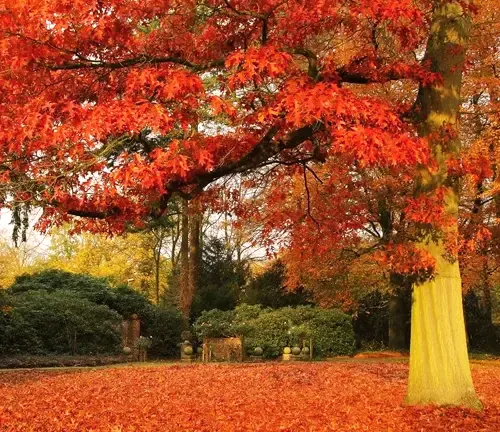
Red Oaks contribute significantly to oxygen production and act as champions in the fight against climate change by sequestering carbon. Whether gracing urban landscapes or standing sentinel in the wilderness, the Red Oak serves as a testament to the intricate and interconnected web of life, showcasing the enduring beauty and importance of nature in our world.
| Characteristics | Description |
| Scientific Name | Quercus rubra |
| Height | 70 to 90 feet |
| Trunk | Straight and sturdy |
| Type | Deciduous |
| Trunk Diameter | Up to 3 feet (0.9 meters) |
| Leaves | Deeply lobed, glossy green |
| Fall Foliage Colors | Red, russet, and orange |
| Soil Adaptability | Adaptable to various soil types |
| Lifespan | Typically 200 to 300 years |
| Growth Rate | Moderate to fast |
| Pollination | Wind-pollinated |
A Brief History
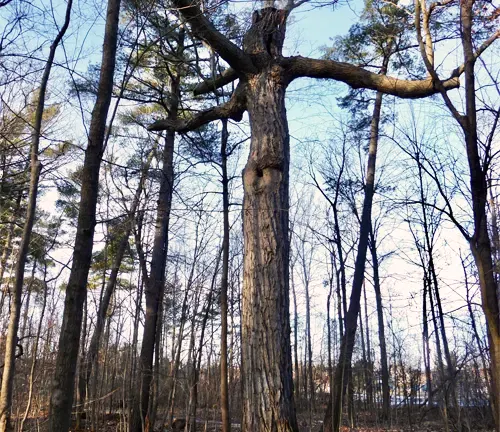
The Red Oak tree, scientifically known as Quercus rubra, is an iconic symbol of strength and endurance in the world of forestry. This magnificent tree has a rich history, deeply intertwined with the landscapes of North America. Native to the eastern and central parts of the continent, the Red Oak has earned its place as one of the most prominent and cherished hardwood trees in the United States. Let’s delve into the fascinating journey of the Red Oak through time.
Color/Appearance
One of the most distinguishing features of the Red Oak is its vibrant and eye-catching appearance. Its leaves turn a brilliant shade of red in the fall, adding a burst of color to the autumn landscape. These leaves are deeply lobed and bear pointed tips, contributing to their unique charm. While its bark starts as a smooth, grayish surface in its youth, it matures into a rugged and furrowed texture, a testament to the tree’s resilience over the years.
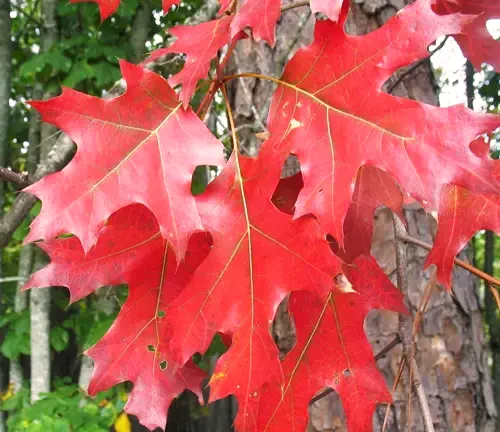
Life Cycle
The life cycle of the Red Oak is a captivating journey of growth and renewal. Starting as a small acorn, this tree matures over several decades, eventually reaching heights of 70 to 90 feet or more. Its acorns, a vital food source for various wildlife, help ensure its survival by distributing its seeds. Red Oaks can live for up to 500 years, making them a true testament to the longevity of nature.
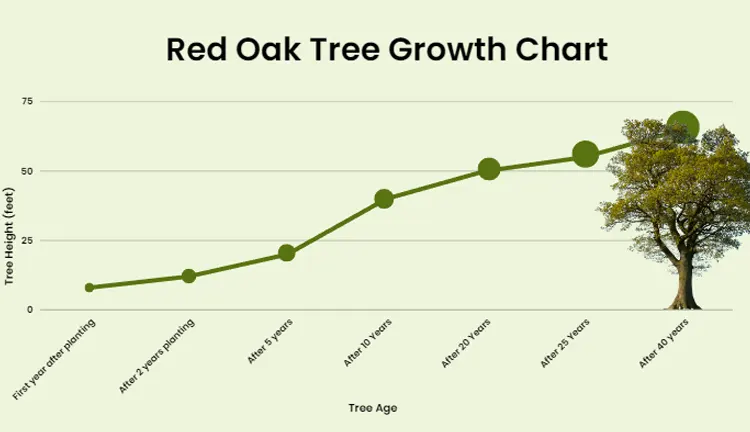
Adaptability and Resilience
The Red Oak stands as a symbol of adaptability and resilience. It thrives in a wide range of soil types, from sandy to clay-rich, and can endure both wet and dry conditions. This adaptability has allowed it to survive and flourish in diverse ecosystems, from lush forests to urban parks. Even in the face of disease and pests, the Red Oak has proven its resilience, making it a reliable and enduring species.
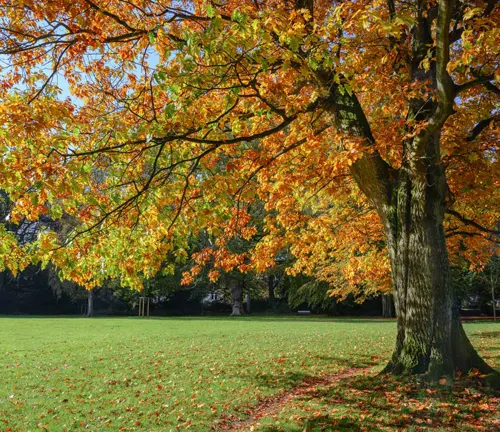
Ecological Importance
The ecological importance of the Red Oak cannot be overstated. Its extensive root system helps prevent soil erosion, making it a key player in maintaining soil stability. Additionally, the tree provides habitat and sustenance for countless wildlife species, including birds, squirrels, and deer, which rely on its acorns for food. Moreover, the Red Oak plays a vital role in the carbon cycle by absorbing carbon dioxide and releasing oxygen, helping to combat climate change.
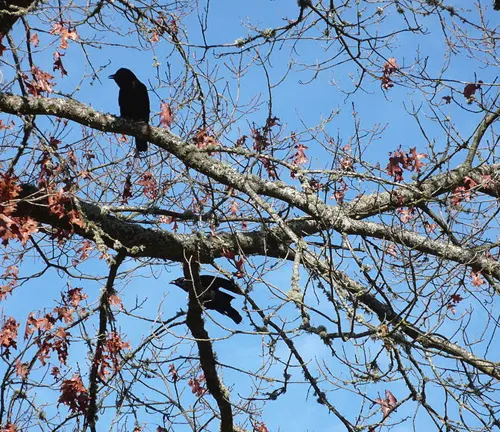

Wood Products and Applications

The wood of the Red Oak is highly valued for its strength, durability, and attractive grain pattern. It has found its way into various woodworking applications, including furniture, cabinetry, flooring, and veneer.
Its distinct reddish hue and pronounced grain make it a sought-after choice for many artisans and craftsmen. The Red Oak’s wood has also been used in the construction of ships, making it a staple in the maritime industry.

Cultivation and Care

Cultivating and caring for Red Oak trees is a rewarding endeavor. They are best grown in well-drained soil and require ample sunlight for optimal growth. Pruning and shaping can help maintain a desirable form, while regular watering during dry spells ensures their health. Proper care not only ensures the tree’s longevity but also contributes to the overall beauty of the landscape.
Benefits
The benefits of the Red Oak tree extend beyond its aesthetic and practical uses. These majestic trees provide shade and natural beauty to parks and urban areas, enhancing the quality of life for people everywhere. Furthermore, they offer environmental benefits by purifying the air and providing a haven for wildlife. The Red Oak serves as a symbol of the enduring connection between humanity and the natural world, reminding us of the importance of preserving our planet’s diverse ecosystems.
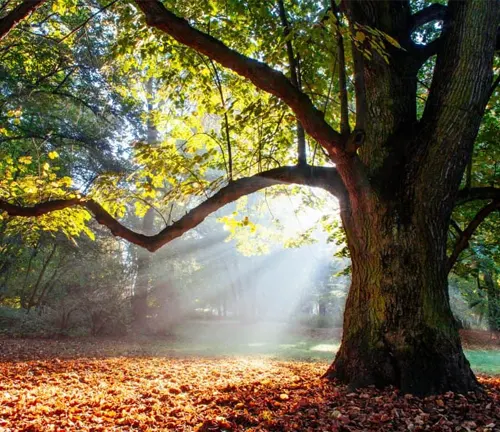
Frequently Asked Questions (FAQs)
- Do all Red Oak trees have red leaves in the fall?
While Red Oak trees are known for their vibrant red foliage in the autumn, not all Red Oaks display this characteristic. Some may exhibit shades of red, while others might turn a more russet or brown color. The extent of red coloration can vary depending on environmental factors, including sunlight, soil conditions, and genetics. - Are there any special uses for Red Oak acorns?
Red Oak acorns are a valuable food source for various wildlife, but they also have historical significance. Native American tribes used to grind acorns into a flour-like substance, leach out the bitter tannins, and use it for making bread and other foods. This process, called acorn leaching, was a crucial part of their diet and culture. - Can Red Oak trees hybridize with other oak species?
Yes, Red Oak trees can hybridize with other oak species, resulting in unique hybrids. One notable example is the Pin Oak (Quercus palustris), which is a hybrid of the Red Oak and the Scarlet Oak (Quercus coccinea). Hybridization can lead to variations in leaf shape, acorn production, and overall tree characteristics. - Do Red Oak trees have any cultural or symbolic significance?
Red Oak trees have cultural and symbolic significance in various Native American traditions. They are often associated with strength, endurance, and wisdom. In some cultures, the Red Oak is seen as a symbol of protection and resilience. Understanding the cultural significance of these trees can deepen our appreciation for their presence in our landscapes. - Can Red Oak trees be grown in urban environments?
Red Oak trees are adaptable and can thrive in urban environments when properly cared for. Their adaptability to diverse soil types and conditions makes them a suitable choice for city parks, streetscapes, and residential areas. However, it’s essential to provide adequate space, soil quality, and maintenance to ensure their health and longevity in urban settings.


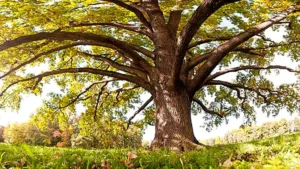
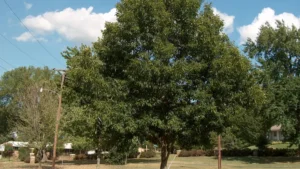
We are trying to save a Red Oak tree on a town Right of Way in Rhode Island(It’s our State Tree) adjacent to our property. Tree Warden says it’s hazardous, we have two licensed Arborists that say with cabling and pruning it can be saved. Town is putting all “liability” on us. How do I go about getting to see if this tree meets historical status to help save it. It’s most likely over 100 yrs old. Please help with any information possible. We are losing this battle! With Gratitude, Judy
Judy
October 12, 2023 12:12 am100 years really isn’t that old, especially for an oak. DOT took down an old maple when they expanded the highway here, and it hurt. They left the old trunk lay rotting for years, taking up space they took down the tree to fill. Maples all over are getting cankers and falling apart now, makes me miss that big old maple even more thinking none of these will live long enough to get that large.
Joshua
August 20, 2024 1:27 pm